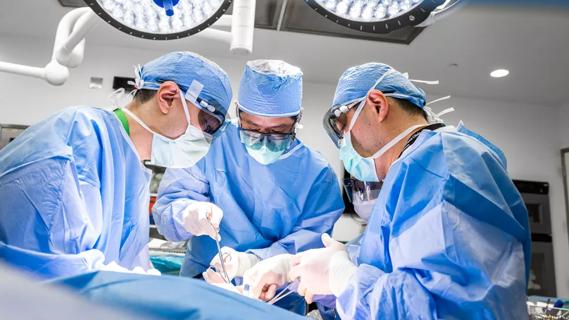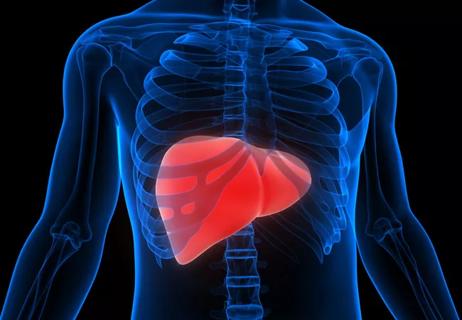Provides superior detection of extrahepatic structures

Advertisement
Cleveland Clinic is a non-profit academic medical center. Advertising on our site helps support our mission. We do not endorse non-Cleveland Clinic products or services. Policy
Most cholecystectomies are now performed laparoscopically, since smaller incisions decrease morbidity and hospital stay and accelerate recovery. Yet the procedure has a significant drawback in that it prevents the surgeon from using tactile discrimination or clearly differentiating between important anatomical structures. As a result, the rate of bile duct injury has increased from approximately 0.2 percent with open cholecystectomy to 0.5 percent, even with the routine use of intraoperative cholangiography.
Bile duct injuries can be devastating, disabling or even fatal for patients. We believe these injuries could be significantly decreased or avoided with the use of near infrared fluorescent cholangiography (NIFC) to improve the visualization of critical anatomical structures.
NIFC is performed with a fluorescent imaging system incorporated into a laparoscope. The system consists of a light source that emits both infrared and xenon light.
To perform NIFC, a fluorescent dye known as indocyanine green (ICG) is given intravenously 45 to 60 minutes prior to the procedure. ICG has been in clinical use since 1956 and is today widely used in multiple clinical and surgical specialties. When illuminated by infrared light, the dye manifests fluorescence. NIFC enables us to clearly visualize all biliary anatomy in real time and operate without causing injury to the bile ducts.
Since we started using NICF, we have conducted clinical trials together with our colleagues at Cleveland Clinic main campus, not only to validate its effectiveness, but also to understand how it compares to intraoperative cholangiography (IOC). We identified 10 reasons why NIFC is preferable to IOC:
Advertisement
We recently initiated a multicenter, international, randomized, controlled, patient-blinded clinical trial comparing NICF to standard white light imaging in visualizing and identifying the main biliary and hepatic structures (cystic duct, right hepatic duct, common hepatic duct, common bile duct, cystic-CBD junction, cystic-gallbladder junction and any accessory ducts) during laparoscopic cholecystectomy.
We expect the trial to finish by June 2017 and the results to be available shortly thereafter.
Advertisement
Advertisement

The importance of raising awareness and taking steps to mitigate these occurrences

New research indicates feasibility and helps identify which patients could benefit

Standardized and collaborative care improves liver transplantations

Caregiver collaboration and patient education remain critical

Beyond recognizing and treating food allergies, GIs also have a responsibility to address common food allergy misconceptions

Important to recognize limitations when it comes to healthcare and research

Findings reinforce the importance of multidisciplinary care

Underlying inflammation may cause higher rates of CV events